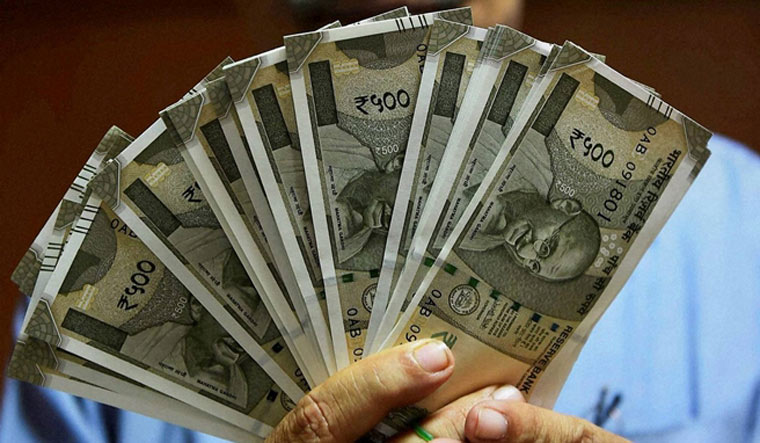India's rupee fell to a fresh record low against the US dollar and closed below the 70-mark for the first time on Thursday as a widening trade deficit worried investors. It comes at a time market was already nervous amid a global turmoil led by the sharp fall in Turkish lira that has roiled emerging market currencies. As global investors rush to safer assets, the US dollar has strengthened and that could continue to weigh on the rupee and other emerging market (EM) currencies, say analysts.
Compared with rupee's close at 69.90 to the US dollar on Tuesday, it hit a low of 70.40 on Thursday. It finally ended at 70.16 against the greenback.
The EM currency crisis can to an extent be linked to the sharp depreciation in Turkish lira. There has been a diplomatic row between the US and Turkey on the later's detention of US pastor Andrew Brunson. Last week, the US doubled tariffs on imports on its refusal to free the pastor jailed there. Turkey in turn issued retaliatory tariffs on the US imports. The tariffs imposed by the US and a soaring domestic inflation has weighed on lira, which has tumbled over 25 per cent since July 25.
The crisis has hit other currencies too. India's rupee has fallen 1.7 per cent against the US dollar in the same period (July 25-August 15). But, its not the worst performer among EMs. The South African rand, for instance, is down 10.8 per cent, Argentina's peso has slumped 9.8 per cent, the Russian ruble has fallen 7 per cent and Brazil's real is down 5.2 per cent. Even China's renminbi and Mexican peso have fallen over 2 per cent.
“We will have to look at rupee depreciation relative to the rest of the world. From the US dollar perspective, Indian rupee was quite stable for five years and it has now started further depreciating. But, its a phenomenon across EMs,” pointed Anand Shah, head of investments and deputy CEO at BNP Paribas Mutual Fund.
Domestic factors also weigh. Driven by a higher crude oil import bill, India's trade deficit (spread between exports and imports) widened to over a five year high of $18 in July. Over April-July, trade deficit now stands near $63 billion.
“The major concern for rupee comes from rising trade deficit and the threat of higher CAD/GDP (the ratio of current account deficit to the gross domestic product),” said Rusmik Oza, senior vice-president at Kotak Securities.
The US economy has picked up this year, the US Federal Reserve is increasing interest rates and this has driven investors to safe assets, in turn strengthening the dollar.
“The continued strength of the US economy and potential rate hikes by the Fed could further weigh on EM currencies. The escalating trade issues could also pose greater risk,” added Oza.
Market men say that importers bought dollars aggressively over the last few days, while the Reserve Bank of India too have intervened selectively.
Over April-June this year, foreign institutional investors sold over Rs 61,000 crore in India's equity and debt markets, according to data from depositories, which had also weighed on the rupee's decline in 2018. However, that tide seems to be turning. In July, FIIs were net buyers in equity and debt to the tune of Rs 2,264 and have further pumped in Rs 7,542 crore in August.
“Volatility in crude oil prices, portfolio inflows, normalisation of the monetary policy in the advanced economies and a likely $25 billion mobilisation from non-resident Indians will guide the level of the rupee in relation to the US dollar,” said Sunil Kumar Sinha and Devendra Kumar Pant of India Ratings and Research.
How the tensions between US and Turkey and the impact on lira pan out in the near-term will also weigh.
“While the present imbroglio in the political space will cause volatility depending on the way in which the dollar-lira value moves, it may be expected that a value of Rs 69 per dollar should be the equilibrium one based on expected fundamentals in the rest of the year, which is predicated on the expectation of a higher trade deficit and CAD but higher invisibles, FPI (foreign portfolio investments), FDI (foreign direct investments) and maintenance of ECBs (external commercial borrowings),” said Madan Sabnavis, chief economist at CARE Ratings.


